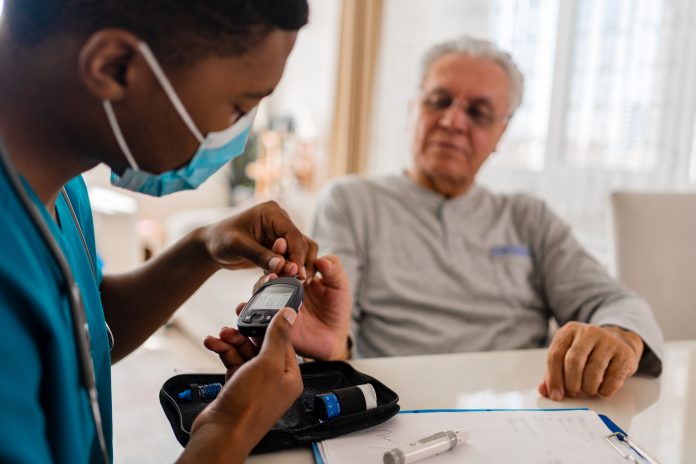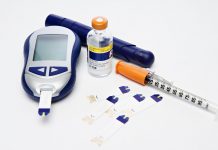Stefano Del Prato and Bart Torbeyns from the European Diabetes Forum (EUDF) outline the major challenges in preventing and managing diabetes, and the actions policymakers and health systems can take to address them
Diabetes is a global public health issue, which leads to an increased risk of developing other non-communicable diseases and drives healthcare expenditures.
In Europe alone, over 61 million people live with diabetes, twice the amount than in the previous decade. The European Commission has introduced a series of public health initiatives to bolster efforts in diabetes prevention and improve access to information and support.
The EU ‘Healthier Together’ non-communicable diseases initiative was launched by the European Commission in 2021 and aimed to support EU Member States in improving citizen wellbeing and reducing the burden of NCDs.
More recently, the European Parliament voted in favour of a Diabetes Resolution calling for Member States to develop, implement, and monitor national diabetes plans and strategies.
The goal is to ensure equitable access to treatments, primary and secondary care, and diabetes education.
Working to affect change at the policy level is the aim of the European Diabetes Forum, a non-profit organisation founded in 2019 by the European Association for the Study of Diabetes (EASD), the European Foundation for the Study of Diabetes (EFSD), the Foundation of European Nurses in Diabetes (FEND) and the Juvenile Diabetes Research Foundation (JDRF).
After the launch, PCDE (Primary Care Diabetes Europe), SFD (Société Francophone du Diabète), IDF Europe (International Diabetes Federation Europe) and ISPAD (International Society for Pediatric and Adolescent Diabetes) joined EUDF as members. The EUDF has pharmaceutical and medical technology companies as supporting collaborators.
We spoke to the EUDF’s Chair, Stefano Del Prato, and Executive Director, Bart Torbeyns, about the daily challenges of living with diabetes, the role of digital solutions in improving care, and the policy measures needed to enable early detection, tackle health inequalities, and increase uptake of innovative solutions.
How manageable is diabetes? What are some of the key challenges people with diabetes often face?
Diabetes is a growing pandemic in Europe and across the world. As its prevalence rises, forecasts say that diabetes will affect more than 67 million people in Europe by 2030, over 10% of all Europeans.
Uncontrolled diabetes can lead to blindness, lower-limb amputation, kidney failure, cardiovascular problems, and other complications. These complications account for up to 75% of the costs of diabetes and represent a major burden to individuals, families, and society.
Early diagnosis, effective disease control, patient education, and empowerment are essential to delay, if not prevent, diabetes complications.
In recent years, better and more efficacious therapeutical approaches have become available, making the disease more manageable.
What needs to be considered is that diabetes is a chronic and progressive condition imposing daily challenges that a person must manage for most of their life. A person with diabetes may have numerous daily tasks requiring lifestyle adjustments and consistent engagement with therapies and technologies.
Spearheading solutions in integrated care, registries, and digitalisation will promote a more data-driven and person-centric approach to healthcare and diabetes management. These changes should pay off in fewer complications, improved quality of life, and more efficient use of clinical resources.
How important is collaboration between services in supporting patients with pre-diabetes and diabetes?
The complexity and chronicity of diabetes make it particularly well-suited for greater integration of care to promote a long-term and holistic focus toward disease management.
People with diabetes, over their life span, require care from multiple providers at different times and healthcare settings (primary, secondary, and specialist care).
Therefore, it is important that people with diabetes experience care continuity within the health system and that providers are not delivering isolated, packaged solutions.
Coordinating care across services at different stages of the disease, including pre-diabetes, and ensuring regular and smooth interaction with the health system is key in favouring proactive preventative approaches to improve the experiences and outcomes for people with diabetes.
Establishing person-centred diabetes management requires a rational use of resources and the implementation of cost-effective procedures within the health system.
To this end, information flows to support self-management and informed decision-making must become a key part of integrated care.
Advances in digitally enabled technologies have the potential to facilitate patient-centred integrated care models by making it easier for people to access information about their health and relay this information to their healthcare provider in an uninterrupted flow.
Diabetes-related health data generated by digitally enabled technologies and used in diabetes registries or diabetes information systems can potentially improve care outcomes.
Tools such as digitally enabled glucose monitoring systems, smart insulin delivery systems, algorithms, and medical apps can all generate needed data and optimise self-care, as well as remote monitoring and treatment adjustments through the healthcare professional while informing the health systems of performance and outcomes.
For instance, diabetes registries can help measure and compare outcomes, highlighting variations in care that can drive quality improvement. Well-established registries can report on a wide range of parameters such as population characteristics, risk factor control, complications, treatments, and costs and identify gaps in the implementation of evidence-based guideline recommendations.
Has the COVID-19 pandemic accelerated the development and uptake of digital tools in diabetes?
The COVID-19 pandemic has dramatically accelerated the shift towards digitalisation and changed attitudes and practices. For patients, the ability to use remote monitoring solutions and access teleconsultations online during the pandemic was a crucial lifeline.
Indeed, many people with diabetes are eager to see the digital transformation of diabetes care integrated permanently into day-to-day practice. Similarly, health systems have become aware of the opportunity to extend health surveillance to more people, including those who usually do not live near healthcare delivery.
What obstacles have impeded progress in diabetes research and the adoption of novel solutions? What are the main challenges facing healthcare operators hoping to upgrade their technology to support diabetes care?
The awareness of digital solutions among people with diabetes and their healthcare providers remains relatively low. The introduction of novel technologies for the management of diabetes (and of other conditions as well) requires a gear shift and a ‘revolution’ in how healthcare has been delivered over the past 50 years or so. These changes will also require new expertise and proper educational programmes for all diabetes stakeholders, including improvement of e-literacy of the diabetic population.
Knowledge about how to use and take advantage of these can be lacking and needs to be established. Physicians and payers sometimes feel ‘indifferent’ towards digitalisation for various reasons, including inertia. Overcoming this hesitancy will be critical to achieving more widespread educated use of technology by people with diabetes, healthcare providers, policymakers, and administrators.
Health systems are still structured around acute (often hospital) care rather than treating chronic conditions (often but not always in primary care settings). This means the incentive structures are not always in place to increase the usage of digitally enabled medical technologies by people with diabetes and healthcare professionals.
For meaningful uptake by people with diabetes and HCPs, digital solutions need to be more integrated into healthcare processes and pathways. This requires more education, reimbursement/funding, investing in the appropriate technical infrastructure, and putting incentives in place to encourage healthcare providers to prescribe these solutions.
The key requirement for integrating these solutions is the need to demonstrate benefits for all actors in the diabetes landscape – people with diabetes, HCPs, payers, and developers. Otherwise, success is not guaranteed.
Can you give us an overview of some emerging digital technologies helping patients’ efforts toward preventing and managing diabetes?
The digital revolution in health is particularly relevant to managing diabetes, as it is a data-rich condition that is largely self-managed. Variables such as blood glucose levels, HbA1c, time in range, and other health and lifestyle factors can all play a role. Tracking, understanding, and decision-making based on these data form the basis of effective self-management and inform treatment and care by healthcare professionals.
Digitally enabled technologies play a central role in diabetes management. For example, glucose monitoring systems can track, predict, and alert people with diabetes to changes in their glucose levels, while insulin delivery systems can calculate and track insulin dosage data and either automatically inject insulin or prompt action via notifications.
Apps can generate and display relevant health trends and provide coaching and education support. At the same time, the algorithms underlying these various technologies work to transform the multitude of diabetes data into meaningful information.
Harnessing the power of data and digital connectivity, such technologies also support healthcare professionals for more precise, responsive, and personalised care, including 24/7 remote monitoring and patient treatment dashboards to track progress.
Connectivity also facilitates other applications, such as e-prescriptions, and provides information to electronic health records and registries to better understand the population-level challenges of diabetes.
What more could be done at a policy level to support innovation in diabetes care and ensure patients can access digital tools?
This can be easily summarised by what we call the 4 Es:
1. Early detection – Ensure timely diagnosis and alert people at risk:
Early detection and diagnosis are essential for diabetes management, enabling timely treatment, the avoidance of serious complications, improved health outcomes, quality of life and significant cost savings for individuals and health systems.
Europeans need effective diabetes screening programmes across Europe. These should address inequalities in access to diagnosis and raise awareness among at-risk populations and vulnerable groups.
2. Equitable, high-quality care – Provide the right treatment for the right person at the right time:
Too often, people with diabetes experience significant delays in treatment initiation and intensification, leading to devastating complications and fatalities. Many policy barriers are preventing them from accessing the best care options.
There is a need for equitable and affordable access to the required medicines, supplies, devices, and digitally enabled technologies, such as glucose monitoring and insulin delivery systems, across Member States. We need to provide people with integrated care pathways to have timely access to the most appropriate management options based on their personal needs, preferences, circumstances, and the latest guidelines.
3. Empowering people – Address lack of awareness and understanding about diabetes:
Managing diabetes is a full-time job. People with diabetes on insulin have to make an estimated 180 daily health-related decisions more than a person without diabetes.
Such decisions may include when and how to monitor blood sugar levels, whether to inject insulin, food choices and when and how to exercise. Stigma should not be part of the diabetes diagnosis or its treatment. By treating people with diabetes as equals in both care and regulatory processes, we can ensure the right treatments and policies are in place for the best health outcomes and quality of life.
4. Embracing science and technology – Harness their untapped potential to deliver effective and tailored care for people with diabetes and those at risk:
New technologies can facilitate data collection, improve self-management and reduce the risk of complications, leading to higher quality of life. Data and innovation can be used across diabetes prevention, diagnosis, and management.
The digital transition can enable new services such as teleconsultations, e-prescriptions and e-health records and facilitate patient feedback. National and European policymakers should accelerate the digitalisation of healthcare for the benefit of people with diabetes and healthcare systems. One step is to create up-to-date incentives and reimbursement models that promote the uptake of digitally enabled technologies into health systems.
Making training for healthcare professionals more widely available to raise awareness and confidence in using digital tools can also improve the uptake of these technologies.
Contributor Details
Editor's Recommended Articles
-
Must Read >> 10% of NHS drugs budget spent on diabetes drugs














